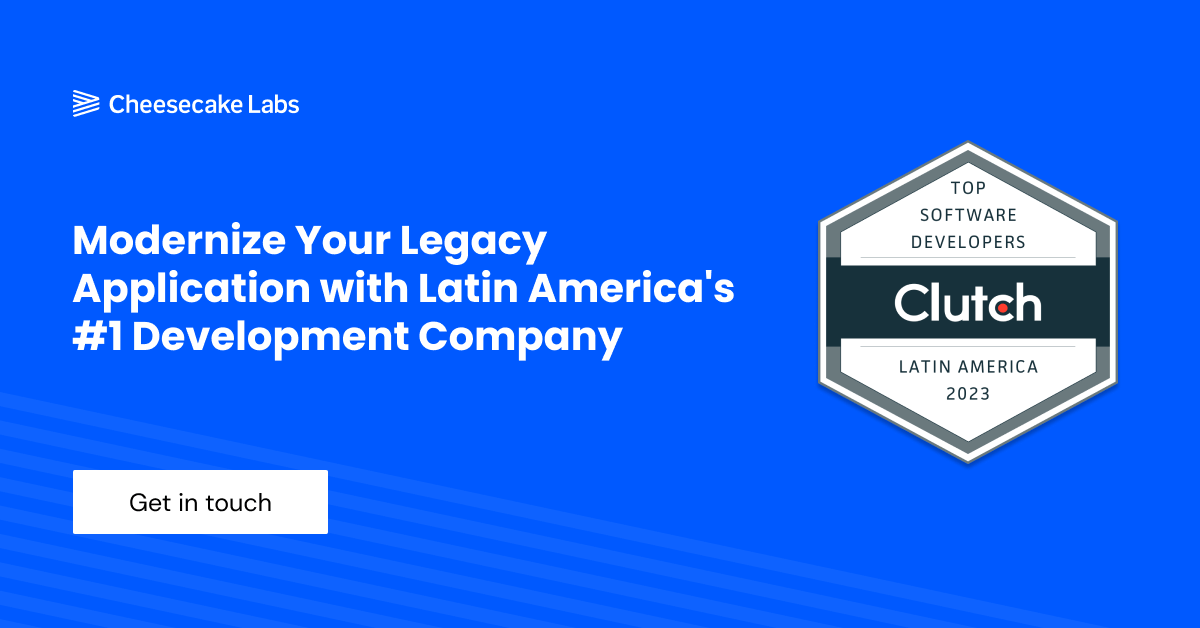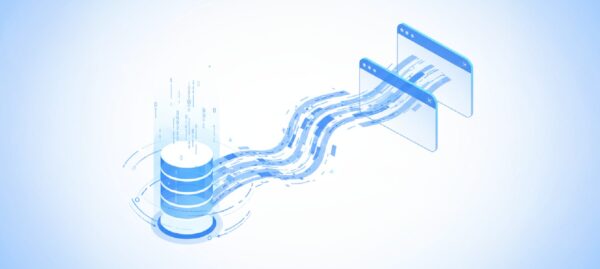AWS re:Invent 2025: The Year AI Agents Became Real for the Enterprise
Álan Monteiro | Dec 18, 2025

Legacy applications can be an Achilles heel for growing SMBs. Slow, vulnerable to attacks, challenging to maintain, and they are major roadblocks to future-proofing operations. In fact, a recent survey found that of 100 companies surveyed, 79% said legacy applications were hindering their organization’s digital transformation.
So what can SMBs do to modernize their legacy systems and their businesses in the process? Read on to learn everything you need to know about legacy application modernization.
Akin to long-standing traditions in the tech world, legacy applications are outdated software, methods, and technologies that persist despite shinier, speedier upgrades. They generally fall into one of four categories:
Despite their many weaknesses, legacy systems continue to be used not just by Small And Midsize Businesses (SMBs) but also by enterprises and even governments. Did you know the IRS has depended on the same computer code for 60 years?
These familiar “classics” are often seen as significant investments that are just too difficult to replace because doing so may cause disruptions to regular operations. There’s also a fear that newer technology can’t do the job properly. Plus, finding a competent team capable of effectively and efficiently updating legacy systems can be difficult.
These concerns are valid because app modernization failure rates are high, at around 74%. But that shouldn’t deter you from upgrading your systems. After all, legacy app modernization is a matter of when not if. Everyone has to upgrade at some point.
In fact, tech leaders are prioritizing legacy application modernization, with global spending expected to reach $3.4 trillion in 2026.
The good news? Having a clear application modernization roadmap can ensure a smoother transition, letting you upgrade your systems while reducing risks, disruptions, and inefficiencies.
Application modernization transforms outdated software to match new computing technologies. It often involves updating the codebase with newer languages, adopting efficient frameworks, and aging software migrating from on-premise servers to cloud-based infrastructures.
The goal is to enhance aging software’s efficiency, security, and adaptability to make them relevant in an evolving digital context.
Below are some of the key technologies for legacy application modernization:

When you modernize your legacy applications, you’re not merely updating your technology — you’re transforming your operations to reduce running costs and improve overall resilience.
Let’s look at some of the biggest benefits:
Given all of these benefits, it’s clear why the following enterprises have chosen to modernize their legacy applications:
As we mentioned, around 3/4 of firms that try modernizing old systems end up falling short. For budget-conscious SMBs, that kind of failure can be a major blow. But don’t worry — proper preparation can turn the tide.
Lay a firm foundation for success by recognizing and addressing the following problems before your legacy system modernization project starts:
Despite the obvious benefits of application modernization solutions, it can be difficult to push for them — especially in companies where change is met with resistance.
After all, modernization can be scary. It often requires staff retraining, adjustment periods, and even new hires. It can trigger changes in multiple departments and divert resources from core operations. It may even threaten the job security of IT personnel who run legacy systems.
Managing these cascading transformations is a formidable challenge. But with a thoughtful approach, comprehensive training, and clear communication, you can bring your team on board with the changes.
Investing in new tech is often costly, with each update requiring a significant outlay. The challenge lies in choosing which updates are worth your hard-earned cash.
To ensure a sufficient life cycle for your investment before the next update arrives, prioritize functions that promise to provide an ROI. Maintain clear priorities to navigate the complexities and adjustments during the transition. It’s also important to approach modernization incrementally (rather than all at once) to make the process more manageable and cost-effective.
Debugging and refactoring someone else’s code can be a headache — even for the most seasoned engineers. To smoothen the transition, work with an application modernization service provider that can manage both the old code structure and new coding standards.
While each modernization journey is unique, this comprehensive nine-step guide can provide a solid start to shaping your strategy:
Any major initiative requires a solid business case. Start by evaluating current applications and ranking them based on their benefits, costs, and risks. Focus your business case on several key drivers, such as the following:
Consider these drivers and outline their impact, and you can build a compelling business case to justify legacy application modernization.
Once your business case is approved, catalog all your IT assets — including applications, systems, business processes, and databases. The goal is to know where your data is and which applications use it. Automated inventory methods can reduce the chance of errors.
There are several approaches to modernizing legacy applications, each with its advantages and considerations:
With the strategy in place, you can now determine the ideal architecture at three primary levels: application, database, and platform/server.
C-suites usually spearhead the modernization effort in large companies. They determine who will be part of the enterprise architecture team, which reconciles business needs with IT capabilities.
For SMBs without comprehensive IT departments, hiring third-party application modernization companies is the best choice.
Keep reading for our tips on choosing the right partner below or head to our blog to learn about our unique approach to development.
Tie your success metrics to your original motivation for undertaking the project. Key outcomes might include improved customer satisfaction, increased employee efficiency, and better use of data insights.
Employee training is pivotal to a successful transition. It equips employees with the necessary skills to use new technologies, minimizes disruptions, and encourages system adoption.
Training also strengthens security and guarantees compliance with new standards to reduce risks. It boosts employee confidence and morale, preparing them for change and increasing job satisfaction.
Automated migration (which often uses refactoring to convert legacy code) lets you tackle modernization incrementally without disrupting operations.
But while it increases efficiency and speed, it might not be applicable in every scenario. Some legacy systems are so complex that automated modernization won’t be possible without first disentangling the existing system’s logic and functionality. Be sure to analyze the feasibility of this approach in your specific context before using it.
Modernizing your legacy applications doesn’t automatically guarantee success, nor will the benefits be immediately visible. Monitoring and optimization are essential final steps. Compare the baseline performance of the legacy system with the improved solution to identify areas that require optimization, so you can make targeted improvements.
Looking for a long term partner to help you monitor and optimize your apps? Cheesecake Labs can help! Get in touch to learn more about our Optimization and Maintenance services.
Given modernization’s inherent complexity, choosing a capable partner is important. Here’s what to look for when making your selection:

Cheesecake Labs can turn your legacy systems into future-ready tools for growth. We offer cost-efficient application modernization solutions for all organizations, from SMBs to enterprises. You can count on our experience and technical proficiency to make the transition seamless and successful.
Get in touch today to tell us about your project. We can’t wait to bring your application into the modern era!

VP of Engineering at Cheesecake Labs - IA / IoT enthusiast. Go bravely where no one have never gone before!


